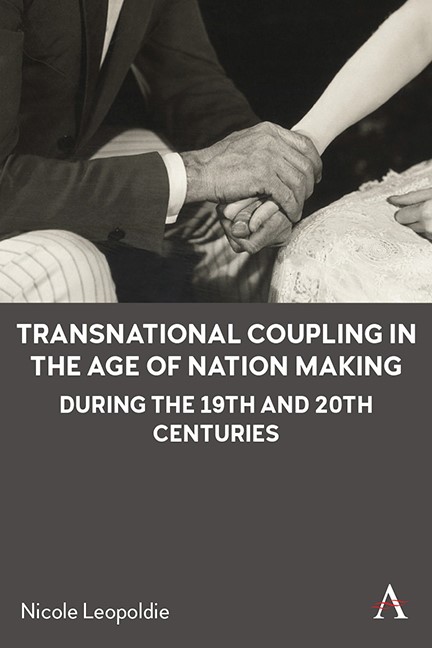Book contents
- Frontmatter
- Contents
- List of Figures
- Acknowledgements
- Introduction Marriage: National Borders and Personal Spaces
- Part I “Trading Titles for Treasure?”: Elite Marriages during the Nineteenth Century
- Part II “Paris is Free—and So Are Its Kisses”: Wartime Marriages during the Twentieth Century
- Conclusion
- Bibliography
- Index
3 - Longing for the Other through the War
Published online by Cambridge University Press: 15 November 2023
- Frontmatter
- Contents
- List of Figures
- Acknowledgements
- Introduction Marriage: National Borders and Personal Spaces
- Part I “Trading Titles for Treasure?”: Elite Marriages during the Nineteenth Century
- Part II “Paris is Free—and So Are Its Kisses”: Wartime Marriages during the Twentieth Century
- Conclusion
- Bibliography
- Index
Summary
In the last chapter of Part One, I proposed for consideration the extent to which cultural othering could be successfully analyzed as an emotional process. In this chapter, I apply this inquiry to the changing contexts of the twentieth century and the subsequent pattern of Franco-American marriages during the world wars. Here, I argue that despite increasingly seeing their own identities through national lenses and despite changing cultural relationships between France and the United States, notions of perceived difference remained the driving force of transnational coupling during the world wars.
This chapter is divided into four parts. The first part begins by contextualizing the broader temporal comparison of nineteenth-century elite marriages and twentieth-century wartime marriages by examining some of the broader global changes brought on by the world wars. These changes shifted the context in which a wartime encounter took place by producing conditions in which marriage participants not only came from the working and middle classes but self-described through more national frameworks. In this setting, notions of difference were therefore further heightened. The remainder of the chapter examines more extensively the extent to which encounter and othering could be considered an emotional process in the context of war. By examining the accounts of marriage participants as well as national news publications, I show not only how notions of difference were marked but also how these perceived differences provoked certain emotional responses. Even though mutual attraction developed among both French and American marriage participants, the processes of othering for each took very different forms and are examined separately. In the second section, I trace the othering of French women by American soldiers and argue that rather than the elite, high cultural forms of the nineteenth century, cultural fascination of the French (or what was perceived as French culture) during the World War I became laced with notions of romance, sex, and pleasure. These conceptions were subsequently transcribed onto French women and the notions of their perceived difference, thereby creating the contradictory construct of war as an opportunity for romance. The third and final section examines the ways in which fear, uncertainty, and the longing for stability under German invasion and occupation during World War II were contrasted with the overwhelming excitement and euphoria of liberation.
- Type
- Chapter
- Information
- Transnational Coupling in the Age of Nation Making during the 19th and 20th Centuries , pp. 83 - 116Publisher: Anthem PressPrint publication year: 2023

